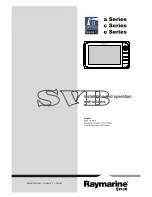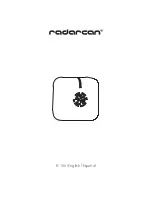
Operating Manual for Euroklav
®
23V-S
Page 11
4
Instructions for all sterilization procedures
4.1
Electricity and water supplies
________________________________________
4.1.1
Distilled or demineralized feed water________________________________________________
The autoclave automatically monitors the availability of cooling water and purified water, as well as the
quality of the distilled / demineralized water before starting a program.
In order to allow an immediate program start and to avoid error reports or interruptions of programs (see
Sections: 7.3 and 7.4) :
•
Before the first sterilization at the start of the working day, check that the internal water supply has
sufficient water in the right chamber of the double internal tank. If necessary, refill with water of
appropriate quality (see Section 8.3.2).
•
If the feed water is drawn directly from a MELA
dem
®
47 water purifier, check that its water supply is turned
on in good time (this may be up to an hour before starting a sterilization program), if the water supply has
been turned off over night, for example.
4.1.2 Power
supply ___________________________________________________________________
Switch on the power using the switch on the front of the autoclave (bottom right). About 15 seconds after the
message "Please wait Door release“ the appliance is in the start status:
4.2
Preparing instruments for sterilization
__________________________________
MELAG - rust-free materials
All parts of the Euroklav
®
23V-S which come into contact with steam are made on non-rusting materials: the
pressure chamber and the door of stainless steel, steam pipes of Teflon, and screws and magnet-valves of
bronze.
Film rust
The use of these materials means that no parts of the autoclave can initiate rust formation. Where rust does
attack the autoclave or instruments sterilized in it, tests repeatedly show that this has been brought into the
autoclave on instruments (film rust).
Even top-quality stainless steel instruments can form rust if they are not handled properly, e.g. if they are
treated with the wrong chemical cleaning or disinfecting agents.
Preparing items for sterilization
The example of the formation of film rust shows how important it is to prepare items properly before
sterilization.
Handpieces and contra-angles must be cleaned before sterilization and maintained (e.g. by oiling).
Other instruments must be disinfected and cleaned immediately after use in accordance with UVV/VBG 103,
or similarly strict national codes of practice in a disinfectant and/or cleaning solution at the correct
concentration for the correct length of time
MELAG recommends the use of cleaning aids such as ultrasonic baths, cleaning and maintenance
equipment for handpieces for contra-angles, as well as thermo-disinfecting devices.
It is essential that the instruments are well cleaned in order to avoid dirt and contamination being separated
from the load in the autoclave and clogging filters, valves, and nozzles. In particular locks, joints, and hinges
must be cleaned thoroughly with a brush before sterilization. No traces of cleaning and disinfecting agents
should be allowed to enter into the sterilization chamber of the autoclave, since this can give rise to
corrosion! The instruments should be swilled off with demineralized water and then dried off before being
loaded in the autoclave. Turbines and handpieces must be oiled in accordance with the manufacturer's
instructions in order to ensure their long working life.
Brand-new instruments
The cleaning procedures described above must also be followed before sterilizing brand-new instruments.
These often carry small amounts of grease, oil and soiling from the manufacturing process.
Important:
Carefully follow all instructions provided by manufacturers of instruments for the preparation of
their products for first-time sterilization and for subsequent sterilizations.
Time (h:min:s)
Pressure (bar)
(Steam)-Temperature (°C)
Program Start-Stop
1 4 : 2 7 : 1 2
0 . 0 2 b a r 2 5 ° C












































